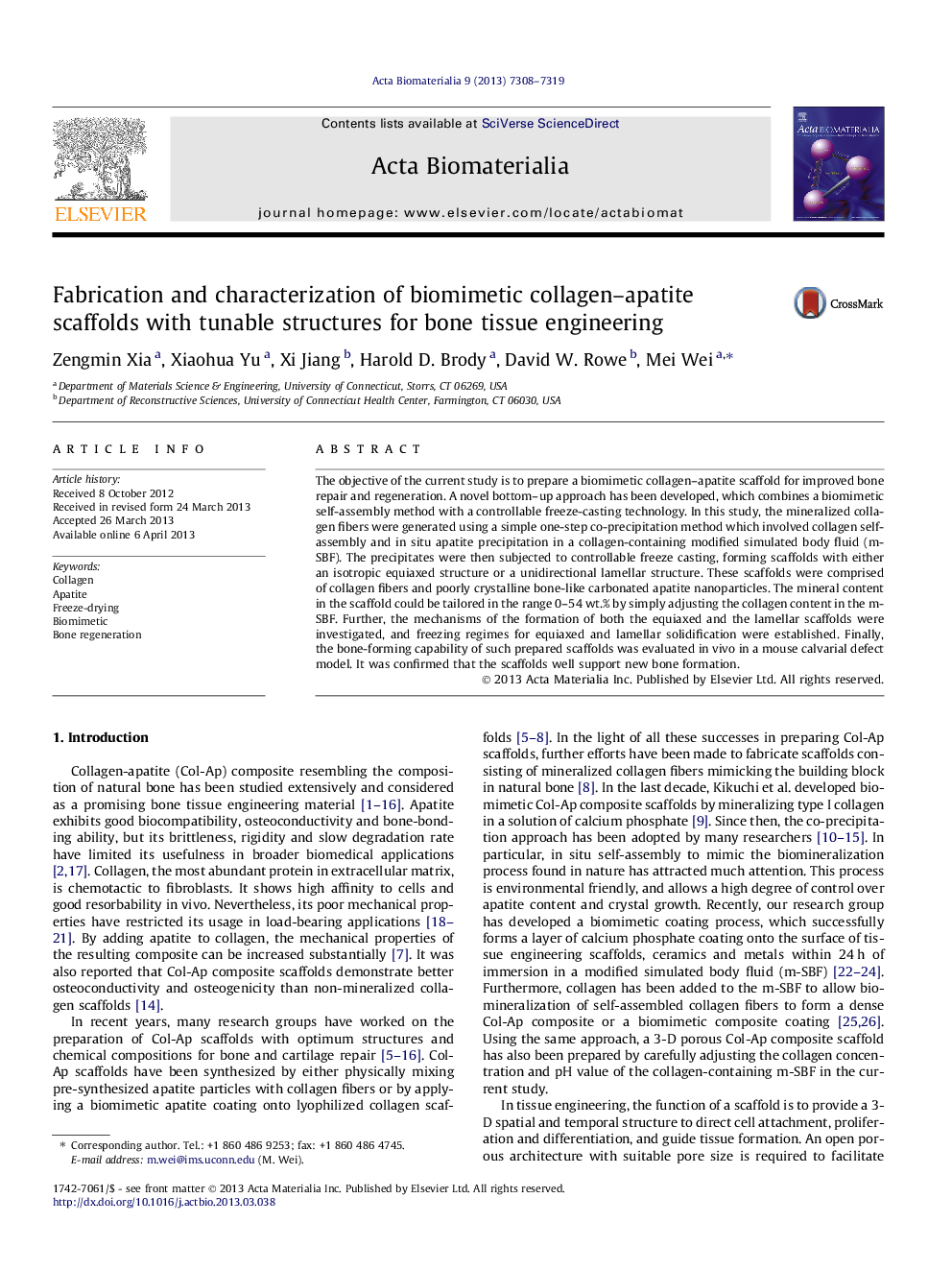| Article ID | Journal | Published Year | Pages | File Type |
|---|---|---|---|---|
| 526 | Acta Biomaterialia | 2013 | 12 Pages |
The objective of the current study is to prepare a biomimetic collagen–apatite scaffold for improved bone repair and regeneration. A novel bottom–up approach has been developed, which combines a biomimetic self-assembly method with a controllable freeze-casting technology. In this study, the mineralized collagen fibers were generated using a simple one-step co-precipitation method which involved collagen self-assembly and in situ apatite precipitation in a collagen-containing modified simulated body fluid (m-SBF). The precipitates were then subjected to controllable freeze casting, forming scaffolds with either an isotropic equiaxed structure or a unidirectional lamellar structure. These scaffolds were comprised of collagen fibers and poorly crystalline bone-like carbonated apatite nanoparticles. The mineral content in the scaffold could be tailored in the range 0–54 wt.% by simply adjusting the collagen content in the m-SBF. Further, the mechanisms of the formation of both the equiaxed and the lamellar scaffolds were investigated, and freezing regimes for equiaxed and lamellar solidification were established. Finally, the bone-forming capability of such prepared scaffolds was evaluated in vivo in a mouse calvarial defect model. It was confirmed that the scaffolds well support new bone formation.
Graphical abstractFigure optionsDownload full-size imageDownload high-quality image (337 K)Download as PowerPoint slide
